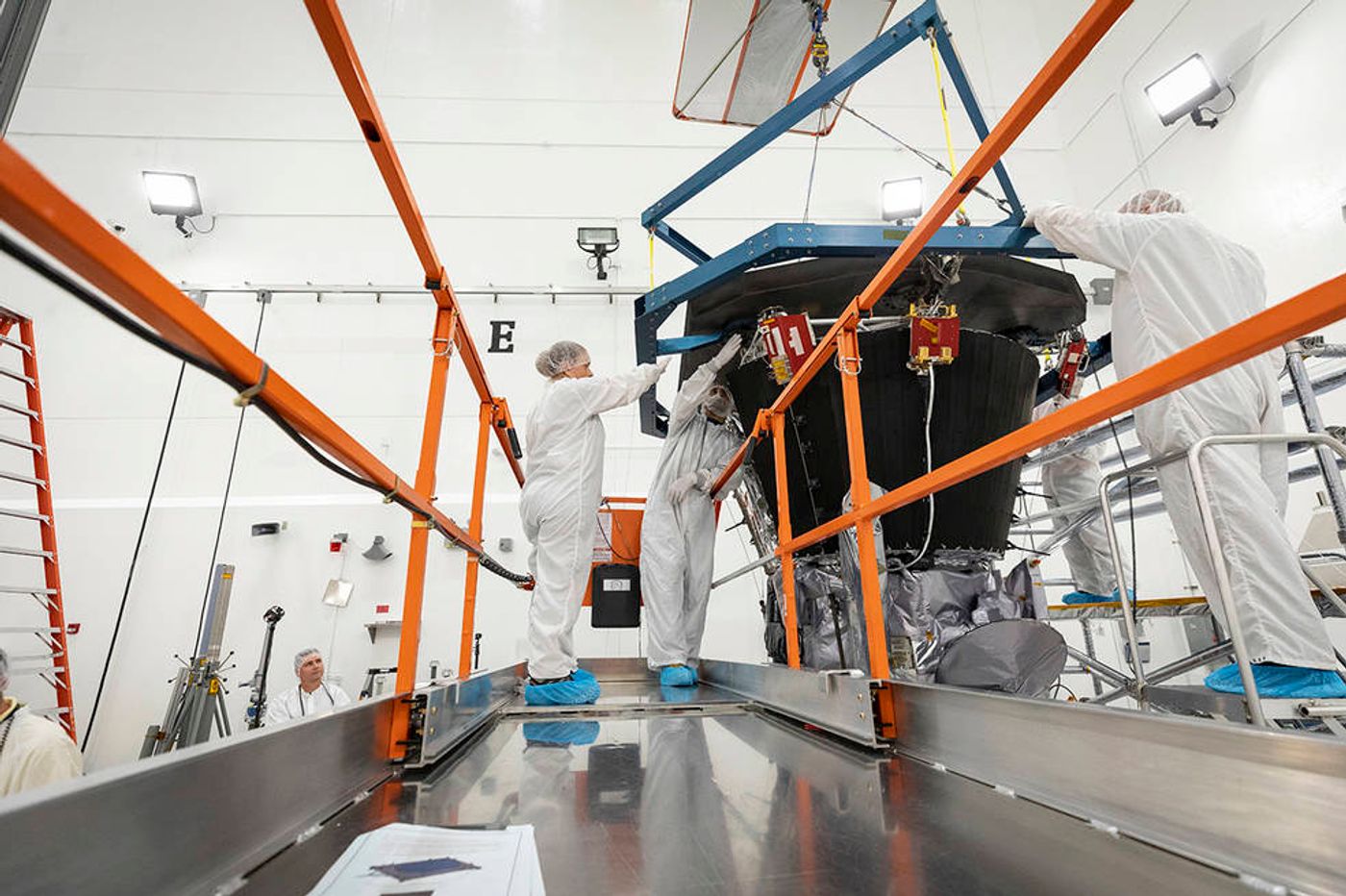NASA Engineers Install Revolutionary Heat Shield on the Parker Solar Probe
Despite all the things we’ve learned about the Sun over the years, we still have much to learn. Fortunately, NASA plans to send a specially-made spacecraft closer to the Sun than any spacecraft before it, allowing scientists to capture vital measurements of the corona and study its internal mechanisms.
The spacecraft, known as the Parker Solar Probe, will orbit the Sun within as little as 4 million miles. At this proximity, the spacecraft will endure scorching-hot temperatures that exceed 2,500 degrees Fahrenheit, and this feat will require a revolutionary type of heat shield.
Image Credit: NASA/Johns Hopkins APL/Ed Whitman
In an official statement released by NASA just last week, the space agency notes how engineers have started to permanently fasten said heat shield to the Parker Solar Probe’s integrated chassis. NASA refers to the heat shield as the probe’s Thermal Protection System, or TPS for short.
But how will the TPS be able to keep the Parker Solar Probe’s internal components cool enough to operate safely? NASA explains it best:
“The heat shield is made of two panels of superheated carbon-carbon composite sandwiching a lightweight 4.5-inch-thick carbon foam core,” the space agency noted in the statement.
“The Sun-facing side of the heat shield is also sprayed with a specially formulated white coating to reflect as much of the Sun’s energy away from the spacecraft as possible.”
Related: Despite their name, solar tornadoes don't actually spin
The TPS measures approximately eight feet in diameter and weighs around 160 pounds. Given these immense figures, NASA’s engineers needed a specialized hoist to seat it into place.
The installation of the TPS on the Parker Solar Probe marks an essential milestone for the project, bringing it one step closer to completion. Assuming everything else goes according to plan, we could be looking at a launch attempt as early as August.
Source: NASA









